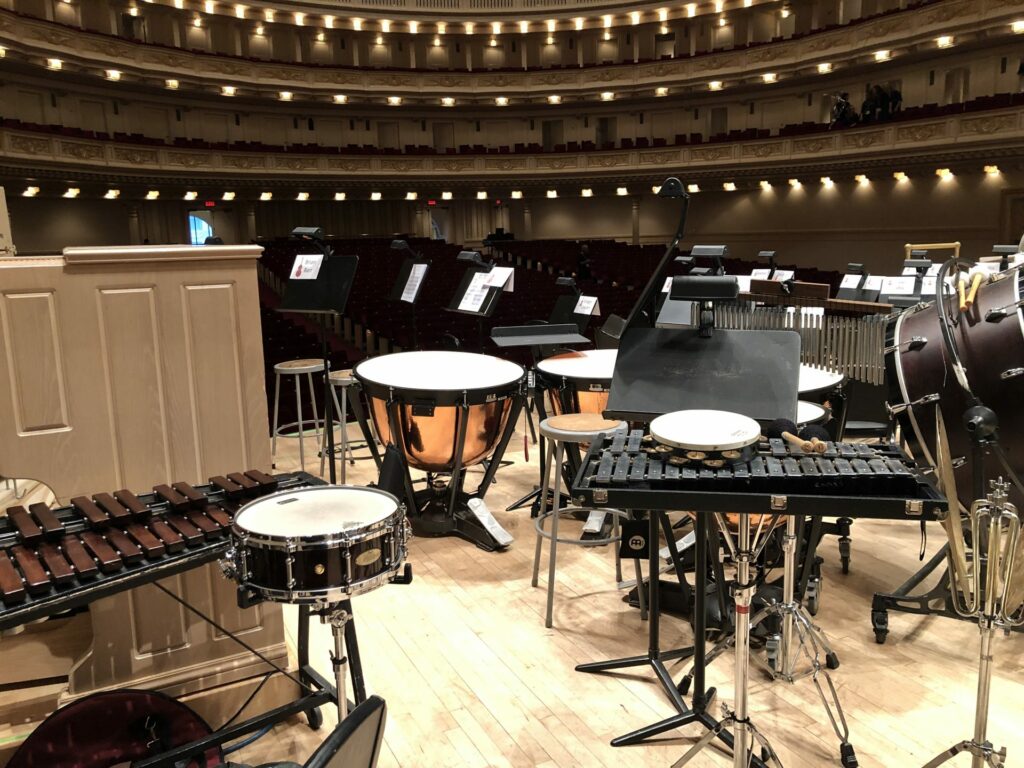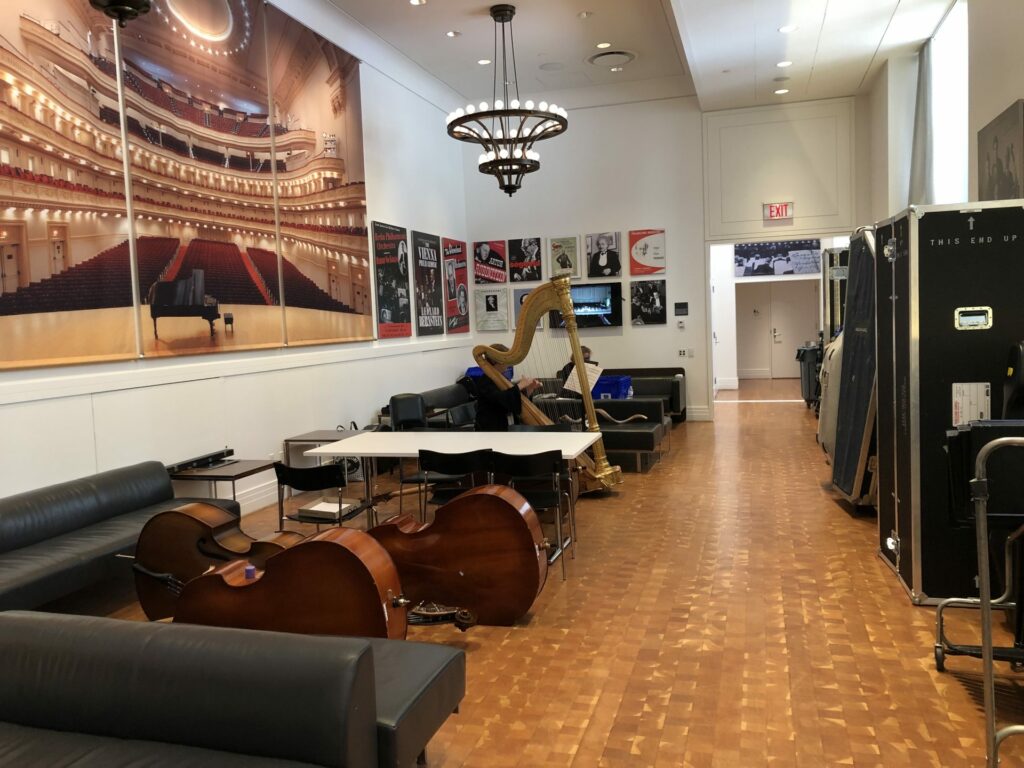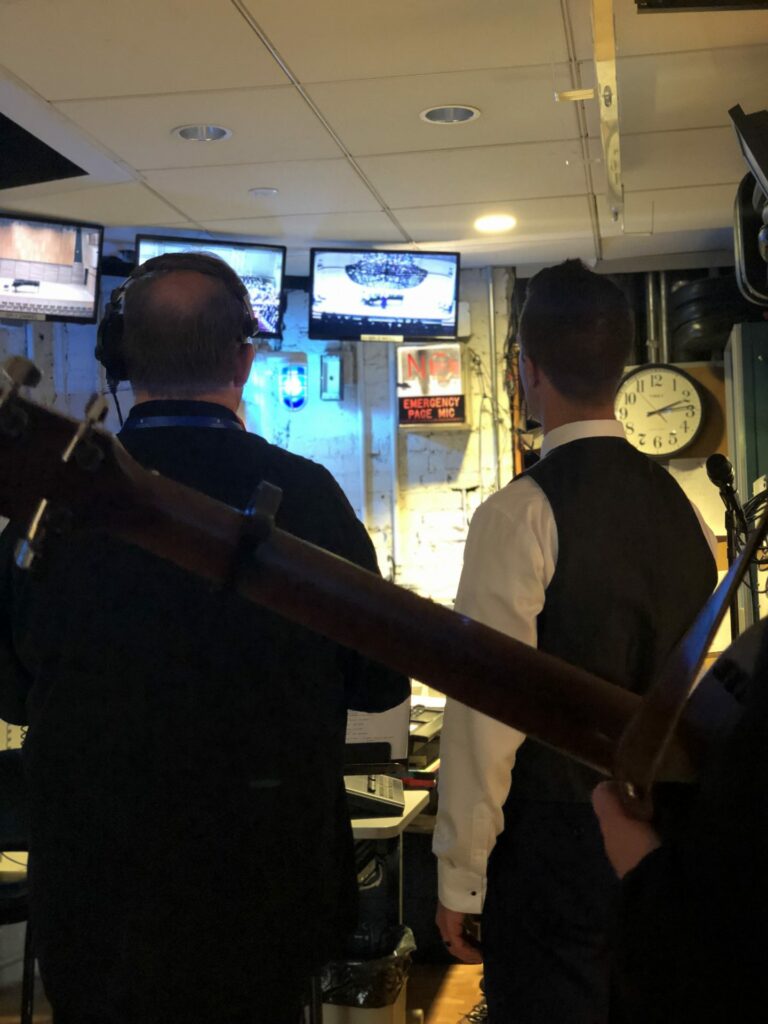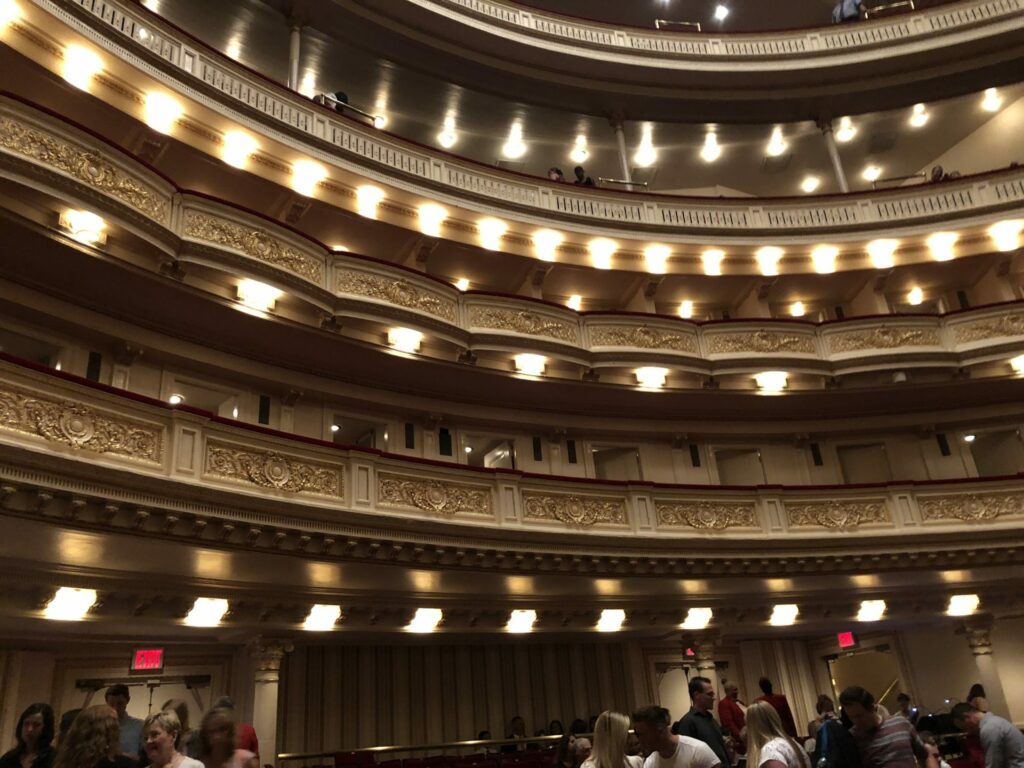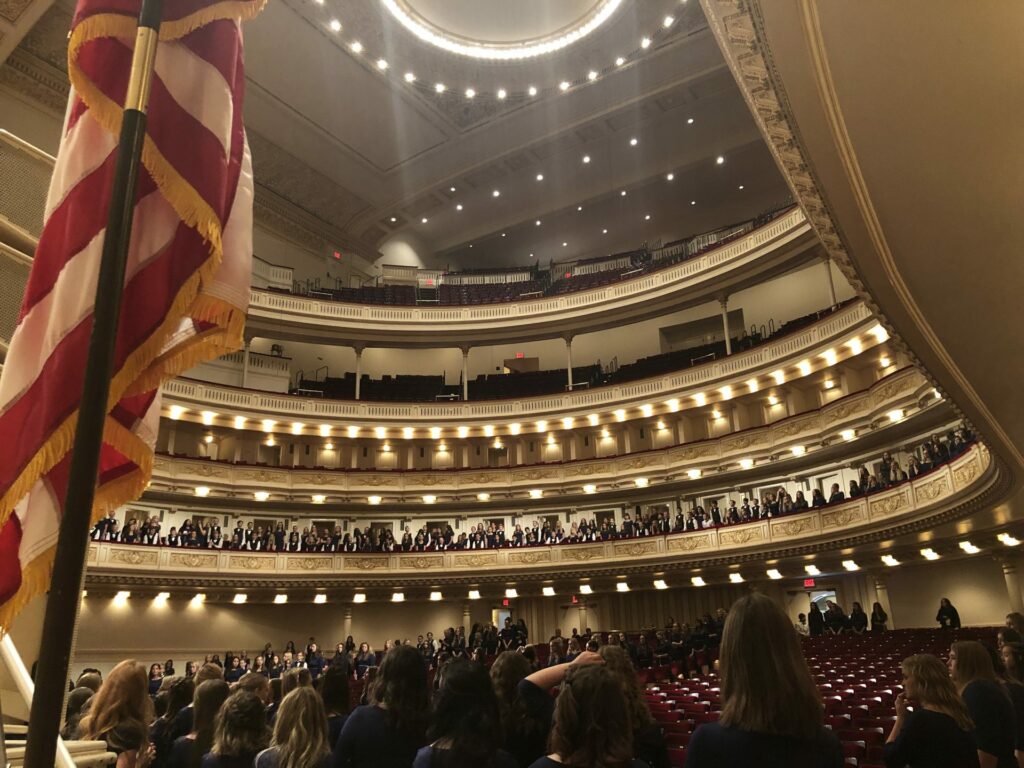The Segerstrom Center for the Arts is an important cultural fixture in south California. The large campus is home to a number of different performance and event spaces and the non-profit organization runs a variety of different community and educational programs to serve the wider community. Although famous for its concerts and other artistic events, the center is also a popular space for business events, seminars and conferences.
The mission of the Segerstrom Center for the Arts extends far beyond simply hosting artistic events. It is all about using the power of performing arts to reach out to the wider community and create shared experiences that bring people together. Through meaningful collaborations with diverse communities, the future of Orange County can be changed for the better.
This Segerstrom Center for the Arts has a rich history and lots of different spaces for the public to explore. Read on to learn more about the history of the center and the different spaces available for arts or business events.
History
The initial idea for the Segerstrom Center for the Arts came about in the 1960s when a group of community leaders saw a need for a space where performing arts companies from around the world could gather. Southern California was already an incredibly diverse place with a rich cultural arts scene, but there was no central hub with concert halls where groups like the Pacific Symphony, the Philharmonic Society of Orange County, and the Pacific Chorale could play.
Change was happening throughout the region with more big businesses moving to the area and new educational institutions being established and community leaders felt that the arts were failing to keep up with these changes, so the idea for a Center for the Arts was born.
Things started really moving in the 1970s when the local Segerstrom family supplied five acres of land and some monetary donations to be used for the new art center, but it wasn’t until 1983 that construction began.
On September 29th, 1986, the Orange County Performing Arts Center, as it was then known, finally opened. The opening was celebrated with a concert in the Segerstrom Concert Hall, designed by architect Charles Lawrence. The Judy Morr Theatre, also designed by Charles Lawrence, was opened on the same day. The center initially hosted performances from the Pacific Symphony, the Philharmonic Society, and the Pacific Chorale, but it soon exploded and more events were added soon after. It wasn’t long before people were flocking to the center to see tours of Broadway musicals, chamber ensembles, jazz legends, children’s performances, cabaret artists and much, much more. Around the same time, an educational center was also opened in order to encourage more young people to get into the arts and create a long lasting legacy.
Over the years, expansions have been made to the center, adding more facilities and increasing the size of the site. The Renée and Henry Segerstrom Concert Hall, named after the founding chairman and his late wife, was opened on September 15, 2006. The Henry Samueli Family Foundation, another generous patron of the center, was also honored with the construction of the Samueli Theatre around the same time. The final addition in this round of expansion, Leatherby’s Cafe Rouge, was built to incorporate the culinary arts and expand the scope of the center and was named after local philanthropist George Leatherby.
In total, these expansions cost over $200 million to complete, and the outdoor plaza area that connected the new buildings with the original center cost $10 million. $2.5 million was invested in the impressive pipe organ that was installed in the Renée and Henry Segerstrom Concert Hall, the cost of which was covered by art philanthropist William J. Gillespie. A large percentage of the remaining costs were also covered by charitable donations. Mr. and Mrs. Henry Sergerstrom, for example, donated $10 million.
It wasn’t until January 12th, 2011, that the name was changed to the Segerstrom Center for the Arts in honor of the family that first made it possible and supported it throughout the years. It was their financial contributions and fierce support that helped realize the vision in the first place and made it a success for all these years.
In 2015 the next act was announced and outlined plans for further expansion of the center. These bold initiatives aimed to cement and expand the center’s place in the wider community. The Centre for Dance and Innovation was at the heart of this new expansion program and in the fall of 2015, the American Ballet Theatre William J. Gillespie School at Segerstrom Center for the Arts was established. This incredible educational facility teaches a range of dancing styles and aims to contribute to the continuing evolution of the medium. Through a large program of events, both on and off campus, the school helps to bring the performing arts to a wider audience and change people’s perception of what dance can be.
Studio D: Arts School for All Abilities was also opened in the same year to make dance lessons more accessible to those with disabilities. These classes are so valuable to all participants and help them learn to express themselves through dance. This vital outreach and inclusivity work was furthered by the Center Without Boundaries program. Through this program, the center partnered with a number of organizations, including Alzheimer’s Orange County, CHOC Children’s Hospital, El Central Cultural de México, and many more.
In 2017 construction was finished on the Julianne and George Argyros Plaza, designed by the world-renowned Michael Maltzan Architecture firm. This is a community-dedicated space that offers year-round, free performances. The existing plaza space was repurposed into a public meeting space to further serve the community. Around $15 million was invested in this addition, in the hope that more people from the surrounding area would be encouraged to visit the center, regardless of financial or cultural background.
Even though it already has a rich history, the center continues to grow and expand. In 2019, for example, construction began on a new site for the Orange County Museum of Art, at a cost of $73 million.
The Segerstrom Center for the Arts is a vital institution in Orange County and in the country as a whole. It brings a range of different artistic performances to the public and plays host to some incredible sculptures, many of them donated by the Segerstrom family themselves. But hosting arts is only part of what makes the center so vital. Through outreach and inclusivity programs, it helps to further the arts and make them accessible to the wider community, so everybody can benefit from creative expression.
Facilities
The Segerstrom Center for the Arts has a range of different facilities for hosting artistic events but also for other uses, like conferences or meetings, for example.
Segerstrom Hall
Segerstrom Hall was the first venue opened at the center but it still remains one of the most impressive. This incredible opera-house-style has a capacity of 2,994. The red glass and granite exterior is beautifully accented by the Grand Portal Arch and Firebird sculpture by Richard Lippold, making Segerstrom Hall an iconic landmark.
Inside you will find a large stage performance space measuring up to 8,075 square feet and an orchestra pit that can comfortably accommodate up to 90 musicians. The hall is used for performances by the resident orchestras, as well as Broadway shows and any other special events that the center is hosting.
The hall is also available for rent, so if you are hosting a concert or large business event and need a space that can accommodate your audience and provide ample stage space and great acoustics, it’s ideal.
Samueli Theatre
The Samueli Theatre is a far more intimate, versatile space housed in the same building as the Renée and Henry Segerstrom Concert Hall but with its own entrance and lobby area. This beautiful limestone and glass structure seats 300 people in stadium-style seating or 320 in cabaret style seating with tables. It can also accommodate 600 for general admission.
This space is more suited to casual events and it’s where you will find jazz performances, cabaret series, and many of the family events hosted at the center. However, it is also a very popular space for seminars and business receptions and is available for rent. Anybody looking to host a professional business event in a unique venue will surely be thrilled with the Samueli Theatre.
Renée and Henry Segerstrom Concert Hall
The Renée and Henry Segerstrom Concert Hall is an incredibly artistic, sculptural building that houses some incredible design feats. The 1,704 seats are carefully arranged around the central performance platform, with an extra 250 places in the choral seating area behind the platform available when not needed by performers. The silver-leafed canopy curves with the balconies, creating an elegant but incredibly interesting space.
The concert hall was, in part, designed by Russel Johnson, a pioneer in theatre and acoustics design. Through studying many historical performance spaces, he developed innovative and sometimes controversial methods for creating the perfect acoustics. He is best known for his work with adjustable acoustics and the Segerstrom concert hall is a prime example of this. There is a huge acoustical ceiling, which can be raised and lowered to suit the needs of the performance. Sound curtains around the auditorium can be used to soak up sound and there is a series of impressively designed reverberation chambers around the side and stage walls. These can be opened and carefully adjusted as needed to carefully control the amount of sound that enters the chambers, allowing for total control over the acoustics in the hall. It is this innovative design that creates the incredible performance experiences that you find at the Segerstrom Center for the Arts.
The Renée and Henry Segerstrom Concert Hall is also home to the amazing William J. Gillespie Concert Organ. This impressive organ, gifted by William J. Gillespie, stands behind the performance area, creating a focal point for the space. It has 4 manual keyboards (61 notes), one pedalboard (32 notes), 4,322 pipes, 57 voices, and 75 ranks. A Kowalyshyn Servo Pneumatic Lever allows for increased control, even when the player is playing multiple divisions of the organ simultaneously. This beautiful instrument brings a new level to performances in the Renée and Henry Segerstrom Concert Hall and makes for an interesting attraction to any and all that visit the space.
Judy Morr Theatre
The Judy Morr Theatre, named after the executive vice president of the Segerstrom Center for the Arts, is another intimate, multi-functional space that is used for a range of art and business events. It can seat 234 people club-style or 269 people with risers on in concert-style. It’s a simple black-box space with multiple seating and staging configurations available, including a raised stage, if necessary. It also comes complete with a lighting and sound system, so it’s ready to go for any event.
This space is popular for arts events but it’s also available for rent if you are hosting business events, cocktail receptions or seminars etc. It’s very versatile, so it can meet the needs of most businesses that hope to host events there, and there is catering available for longer events too.
Education Center and Meeting Spaces
Before 2007 there was no central hub or dedicated team to manage all of the center’s community outreach and educational programs. But that all changed when the education center was opened and it is now home to a variety of different outreach programs, offices for a team of staff that manage and run those programs, and a number of different performance and meeting spaces.
Inside, you will find the studio performance space and the Boeing education lab that are used throughout the year for educational programs. The studio performance space can seat 200 for performances or 180 for a seated banquet. However, many of the spaces in the education center are available for rent and are used for many different events, including corporate events, receptions, meetings, and conferences.
Julianne and George Argyros Plaza
One of the main goals of the Segerstrom Center for the Arts is to bring artistic performance and expression to the wider community and break down barriers to entry. The Juliane and George Argyros Plaza is the perfect example of this commitment.
This beautiful outdoor space has a capacity of 2000 and hosts free events throughout the year. These range from festivals and concerts to local community events celebrating the diversity of Southern California. There are two permanent stages with some trees for shade in the summer and a full-service cafe close by.
Leatherby’s Cafe Rouge
Leatherby’s Cafe Rouge, found in the Renée and Henry Segerstrom Concert Hall, is often considered the culinary center of Orange County. This beautifully designed and decorated steakhouse serves classic dishes with a modern twist, made from locally sourced ingredients. All of the food is of the highest quality, with a focus on sustainability.
The restaurant is open on performance nights and stays open half an hour after the beginning of the last performance. It is, however, closed on days when there are no performances in the Renée and Henry Segerstrom Concert Hall.
All of these facilities are available to the public and many of them can be hired for your own events. So, if you are planning a business event, the Segerstrom Center for the Arts is perfect.
Online Learning
The Segerstrom Center for the Arts is dedicated to creating learning opportunities for as many people as possible, regardless of their background. This is extended to people that live outside Southern California and do not have easy access to the center through the online learning portal. There are a number of video classes available online, covering a wide range of artistic disciplines. This content is updated regularly and is always available for free to everybody.
Events
The Segerstrom Center for the Arts hosts a wide range of events throughout the year. The Pacific Symphony, the Philharmonic Society, and the Pacific Chorale are all residents at the center and give regular performances, but there are also many other regular events to cater to a range of tastes.
You can expect to find international ballet performances, as well as new shows developed by the ballet school at the center. Many world-class musicals and Broadway shows also tour at the Segerstrom Center for the Arts.
The smaller performance spaces host regular jazz and cabaret performances, but they are very versatile and can be used for other purposes. These are available to rent and are very popular for events like business conferences, seminars, and networking events. Some event spaces are also available for weddings.
Currently, shows such as “Mean Girls,” “My Fair Lady,” and “Wicked” are all taking bookings. There are also Dance Fitness classes running.
How to Find Us
The Segerstrom Center for the Arts is well-located in the heart of the theatre district in Orange County. It is easily reachable by car on either the 405 and 55 freeways, where you will see plenty of signs to direct you. There are also some great Metrolink and bus services available for those without access to a car.
If you are traveling from Los Angeles, there are a number of great options to choose from. By car it will take around 40 minutes to drive from LA. The Pacific Surfliner train will also take you close to the center in around 55 minutes, then you can walk. Alternatively, you can get the train the majority of the way and then get on the 53 bus for the rest of the journey. The 55 bus does go straight there from Los Angeles, but it will take you around 2 and a half hours to do the full journey.
The center is also perfectly situated right by John Wayne airport for easy access for any visitors from out of state. It is only a short drive (around 8 minutes) from the airport to the campus.
There are a number of great accommodation options within two miles of the Segerstrom Center for the Arts, so if you are visiting for a business event or a performance, you will easily find somewhere to stay. The Courtyard Santa Ana is only one mile from the center and offers very reasonable room rates There is also a Doubletree by Hilton hotel just 1.1 miles away.
When attending an event at any of the spaces at the center, you will have access to a parking structure. All tickets will be validated for 30 minutes of free parking and there is also limited parking in the circular drive, but this area is mainly for drop-offs. If you get a taxi to an event, this is most likely where they will drop you.
Venue Hire
The majority of the venues are available for hire to businesses or arts companies hoping to put events on. If you are interested in hiring Segerstrom Hall, the Renée and Henry Segerstrom Concert Hall or the Samueli Theater, you can make an inquiry through the website. There are also a number of rehearsal rooms, public plazas and education rooms that can be hired for your event needs.
The Segerstrom Center for the Arts was initially conceived of as an event space where the diverse cultural heavyweights in Southern California and beyond could perform. But since it was first built, it has become so much more than that.
Over the years, generous supporters and donors, like the Segerstrom family and William J. Gillespie, have helped the center grow into an institution that is central to the local community. There are many educational and outreach programs designed to connect with the local community and contribute to the future development of the arts.
The center now hosts a range of amazing artistic performances and is often rented for weddings, business events, cocktail receptions and many other events.
If you are interested in using any of the available spaces for your own events, get in touch to make an inquiry.

